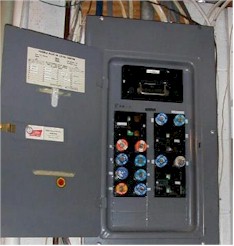greenawaltmark4
Member
- Location
- US
I need help deciphering between the 2 , is it a fuses vs. Breaker?
Sent from my SAMSUNG-SM-G900A using Tapatalk
Sent from my SAMSUNG-SM-G900A using Tapatalk
I am inquiry is about if fuses are used specially for overloads , I believe circuit breakers are for scgf and overload protection.What exactly is the question?
Both can be used either way and both can provide both.I am inquiry is about if fuses are used specially for overloads , I believe circuit breakers are for scgf and overload protection.
Sent from my SAMSUNG-SM-G900A using Tapatalk
When sizing for a motor why do we use fuses and breaker to protectBoth can be used either way and both can provide both.
When sizing for a motor why do we use fuses and breaker to protect
Sent from my SAMSUNG-SM-G900A using Tapatalk

When sizing for a motor why do we use fuses and breaker to protect
Sent from my SAMSUNG-SM-G900A using Tapatalk
I'm installing power for a 15 hp motor for a compactor , the specs call it out to have a fused disconnectYou don't have to, it's design choice.
That is design choice by the mfg. You most likely have a motor controller with overloads as well. The complete assembly was tested by UL with a certain size and type of fuses ahead of it. The mfg could have had it tested with/or a CB. Design choice, as long as UL is happy with the test results.I'm installing power for a 15 hp motor for a compactor , the specs call it out to have a fused disconnect
Sent from my SAMSUNG-SM-G900A using Tapatalk
Regarding motors, for most motors, overload protection and short circuit/ground-fault protection are separate handled by 'devices'. Small motors, at or under 15A, the overload protection is built into the motor or integral control. Over 15A some have integral overload, but most do not. This is why many require motor starters, as the overload protection is part of the starter (considered a controller under Code).I'm installing power for a 15 hp motor for a compactor , the specs call it out to have a fused disconnect

